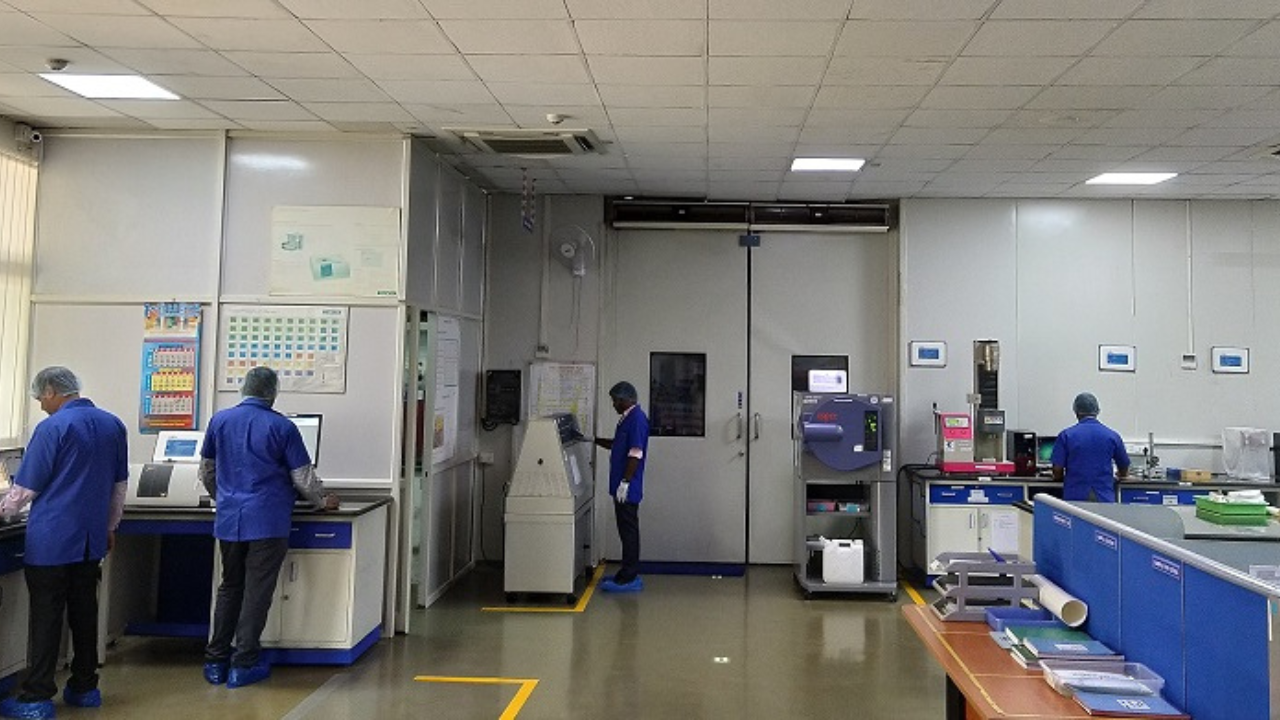NABL Accredited Labs – Why They Matter & How to Get Certified
In the field of diagnostics and testing, ensuring accuracy and reliability is crucial. One way to guarantee high standards is by choosing NABL Accredited Labs. These laboratories follow strict quality control measures, ensuring precise test results. If you’re looking for a trusted facility, NABL accreditation is a key factor to consider.
What is NABL Accreditation?
NABL (National Accreditation Board for Testing and Calibration Laboratories) is an autonomous body under the Quality Council of India (QCI). It grants accreditation to testing and calibration laboratories, ensuring compliance with global quality standards. This certification enhances credibility and builds trust in the industry.
Why is NABL Accreditation Important?
1. Ensures High-Quality Testing
Accredited laboratories follow standardized procedures, reducing the chances of errors in test results. This ensures accurate diagnosis and reliable testing for various industries, including healthcare, pharmaceuticals, and engineering.
2. International Recognition
NABL accreditation aligns with ISO/IEC 17025 standards, making test results widely accepted across the globe. This is especially beneficial for companies involved in international trade and research.
3. Boosts Customer Confidence
Patients, businesses, and stakeholders trust NABL-certified labs due to their high level of accuracy and credibility. This helps laboratories attract more clients and maintain a strong reputation in the market.
4. Compliance with Regulatory Requirements
Many government agencies and private organizations mandate NABL accreditation for laboratory testing. It ensures compliance with industry regulations and enhances market access.
Process of NABL Accreditation
Step 1: Application Submission
The lab must submit an online application via the NABL portal, along with all necessary documents, including quality manuals and procedural guidelines.
Step 2: Preliminary Assessment
NABL officials conduct a preliminary evaluation to determine the lab’s readiness for accreditation. Any gaps or deficiencies are highlighted for correction.
Step 3: On-Site Assessment
A team of NABL assessors visits the lab to verify compliance with ISO/IEC 17025 standards. This includes evaluating personnel competency, equipment calibration, and procedural consistency.
Step 4: Report & Corrective Actions
The lab receives a detailed report outlining any non-conformities. The lab must address these issues and submit corrective action plans within a specified timeframe.
Step 5: Accreditation Grant
Once all corrective actions are verified, NABL grants accreditation, making the lab officially recognized as a high-standard facility.
Types of NABL Accreditation
1. Testing Laboratories
These labs perform chemical, biological, mechanical, electrical, and forensic testing, ensuring accurate and reliable test results.
2. Calibration Laboratories
Calibration labs test and adjust measuring instruments to maintain accuracy and precision in various industries, including manufacturing and healthcare.
3. Medical Laboratories
Hospitals and diagnostic centers with NABL accreditation offer reliable pathology, radiology, and molecular testing services for accurate disease diagnosis.
Challenges in Getting NABL Accreditation
While NABL accreditation offers numerous benefits, obtaining it can be challenging due to:
- Strict Compliance Requirements: Labs must meet stringent quality and procedural guidelines.
- Cost Factor: Setting up an accredited lab requires significant financial investment.
- Time-Consuming Process: The entire accreditation process can take several months.
- Regular Audits: Accredited labs must undergo periodic assessments to maintain certification.
How to Maintain NABL Accreditation?
Getting accredited is just the first step; maintaining the certification is equally important. Here’s how labs can ensure continued compliance:
1. Regular Internal Audits
Labs must conduct internal audits to identify and rectify any non-conformities.
2. Employee Training & Skill Development
Ongoing training programs for lab technicians ensure competency in the latest testing methodologies.
3. Calibration & Equipment Maintenance
Regular calibration and servicing of lab equipment help maintain accuracy in test results.
4. Compliance with Updated Guidelines
Labs must stay updated with NABL’s evolving standards and guidelines to ensure continued accreditation.
Conclusion
Choosing NABL Accredited Labs ensures high-quality, accurate, and globally recognized test results. Whether you’re a business seeking reliable testing services or a laboratory aiming for accreditation, understanding the process and its benefits is crucial. By adhering to stringent standards, these labs contribute to scientific and medical advancements, ensuring accuracy and reliability in testing.
Frequently Asked Questions (FAQs)
1. What is the difference between NABL accreditation and ISO certification?
NABL accreditation focuses on laboratory testing and calibration, ensuring compliance with ISO/IEC 17025 standards. ISO certification, on the other hand, applies to various industries and management systems beyond laboratories.
2. How long does it take to get NABL accreditation?
The process typically takes 6-12 months, depending on the lab’s readiness, documentation, and adherence to guidelines.
3. Is NABL accreditation mandatory for medical labs?
While not mandatory, NABL accreditation enhances credibility and ensures compliance with quality standards, making it highly beneficial for medical labs.
4. Can a small laboratory apply for NABL accreditation?
Yes, small laboratories can apply, provided they meet the required infrastructure, personnel competency, and quality standards.
5. What happens if a lab fails the NABL assessment?
Labs that fail the assessment must address non-conformities and reapply after implementing corrective actions.
6. How often does NABL conduct re-assessments?
NABL conducts surveillance audits annually and full reassessments every two years to ensure ongoing compliance.
7. What is the validity of NABL accreditation?
NABL accreditation is valid for two years, after which labs must undergo a renewal assessment.
8. Does NABL accreditation apply to government and private labs?
Yes, both government and private laboratories can obtain NABL accreditation if they meet the required criteria.
9. How much does NABL accreditation cost?
Costs vary depending on the lab’s size, scope of testing, and infrastructure requirements.
10. Can a lab lose its NABL accreditation?
Yes, if a lab fails to comply with NABL guidelines or does not address non-conformities, its accreditation may be revoked.
